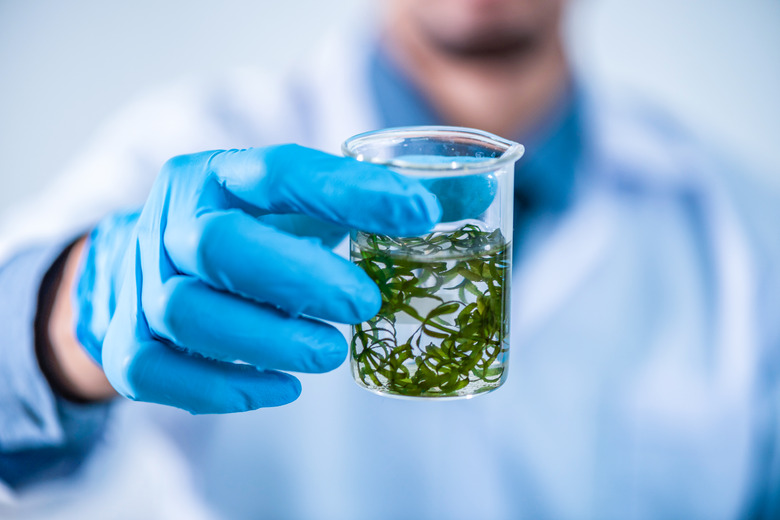Difference Between Protozoans & Algae
In many ways, protozoa and algae are similar. In biological terms, they belong to the same kingdom. They are both composed of eukaryotic cells, which means that they have a membrane-bound nucleus and some other basic cellular structures. However, their method of obtaining energy, as all organisms must, is very different and is the fundamental difference between these two types of organisms.
Taxonomy
Taxonomy
Taxonomy is the classification of organisms based upon their physical similarities. The Linnaean taxonomic system is the current system that scientists use to classify all living organisms. In this system, organisms are put into seven major divisions: kingdom, phylum, class, order, family, genus and species, with the class "kingdom" being the broadest category and the class "species" being the narrowest, referring to a single type of organism. For instance, the kingdom called "Animalia" includes all animals, but the species "Homo sapiens" only refers to one creature, humans.
Algae
Algae
The word "algae" refers to a wide variety of organisms that come from many different phyla in the taxonomic system, but all belong to the kingdom "Protista." All algae contain chlorophyll and can create their own energy, like plants, and are considered plant-like. Some are unicellular while others are multicellular, with seaweed being a well-known type of multicellular algae.
Protozoans
Protozoans
Protozoa also belong to the kingdom "Protista." These organisms are unicellular and are classified by their method of movement. They can swim by using flagella, which are whiplike strands, cilia or pseudopods, which are extensions of the cell that pull it along, or they do not move at all. Amoebas are a type of protozoa that is very familiar. Some protozoans are responsible for human diseases, such as malaria.
Differences
Differences
Algae and protozoans belong to the same kingdom, Protista, which is the kingdom that is used for many organisms that do not fit neatly into another category. Protists include algae, protozoa and slime molds. The major difference between algae and protozoa is that algae are able to make their own food, as plants do, while protozoa ingest other organisms or organic molecules, as animals do. In scientific terms, algae are "autotrophs" and protozoa are "heterotrophs." The word "protozoa" actually refers to this fundamental difference, with "pro" meaning first and "zoa" meaning animal.
Cite This Article
MLA
Leggett, Rochelle. "Difference Between Protozoans & Algae" sciencing.com, https://www.sciencing.com/difference-between-protozoans-algae-7851824/. 26 January 2011.
APA
Leggett, Rochelle. (2011, January 26). Difference Between Protozoans & Algae. sciencing.com. Retrieved from https://www.sciencing.com/difference-between-protozoans-algae-7851824/
Chicago
Leggett, Rochelle. Difference Between Protozoans & Algae last modified March 24, 2022. https://www.sciencing.com/difference-between-protozoans-algae-7851824/
